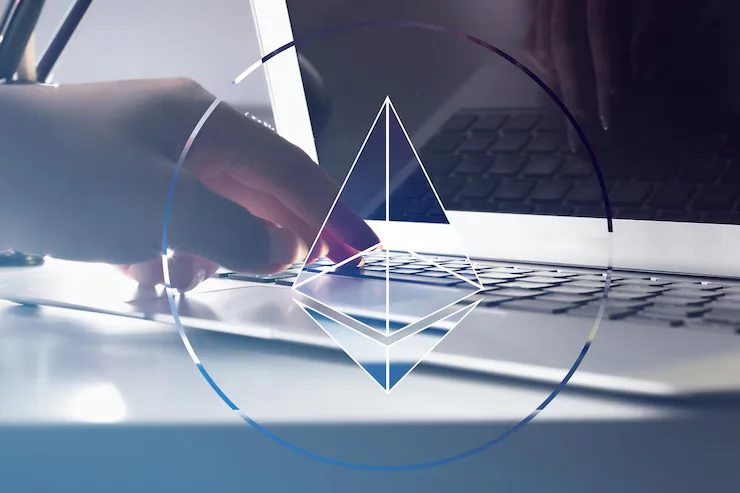Ethereum wasn’t just born; it evolved. What started as a revolutionary ‘world computer’ concept has relentlessly pushed the boundaries of what blockchain can do, becoming the bedrock for the sprawling world of decentralized finance (DeFi). But let’s be clear: the Ethereum humming along in 2025 is a different beast entirely compared to its early days. With the groundbreaking Merge transition firmly in the rearview mirror and nimble Layer 2 solutions now zipping millions of transactions across the network daily, Ethereum operates with a power and finesse that might have seemed like science fiction just a few years ago.
This piece dives into the core elements making Ethereum such a compelling force in today’s digital asset conversation. We’ll unpack its technological underpinnings, the vibrant ecosystem blooming on top of it, and the tangible ways it’s being used. Think of this as your clear-eyed guide to understanding how it continues to pioneer blockchain tech and shape the crypto market right now and why you’d possibly want to buy Ethereum crypto in the current year.
(Heads up: This article is for informational purposes only. It’s not financial advice!)
Understanding Ethereum’s Evolution: More Than Digital Currency
Ethereum kicked things off back in 2015 as the original programmable blockchain, the birthplace of smart contracts. But fast forward to 2025, and it’s become so much more. It has solidified its role as the primary settlement layer for the decentralized web: less a simple digital currency, more a global, trust-minimized foundation for a digital economy. Imagine that “world computer” vision fully realized: a network where decentralized applications (dApps) run autonomously, powering everything from complex financial instruments to new forms of digital identity, all without needing traditional middlemen. That’s the essential infrastructure Ethereum provides today.
The Fundamental Shift of The Merge
Transition to Proof-of-Stake (PoS)
The 2022 Ethereum Merge wasn’t just an upgrade, it was a seismic shift for the entire blockchain space. Ditching the energy-guzzling Proof-of-Work model, Ethereum embraced the vastly more efficient Proof-of-Stake (PoS) consensus. The result? A staggering drop in ETH energy consumption, over 99.9%, silencing a major environmental critique and boosting its ESG credentials. But the change runs deeper. PoS revamped network security by empowering validators (ETH stakers) instead of miners, weaving economic incentives directly into the network’s fabric to discourage bad actors and arguably making Ethereum even more secure.
Do ETH’s New Economics Make It “Ultrasound Money”?
The combination of PoS reducing new ETH supply issuance and the EIP-1559 mechanism burning a portion of transaction fees has radically altered Ethereum economics. This potent mix led to the captivating idea of ETH as “ultrasound money” – a deflationary crypto asset. But here’s the catch: it’s potentially deflationary. When network activity buzzes and the fee burn outpaces new ETH creation, the total supply actually shrinks. While it’s not always deflationary (it depends on usage), this dynamic represents a fundamental departure from ETH’s inflationary past. Curious about the current rate? Check out tools like ultrasound.money for live ETH tokenomics data.
Scaling the World Computer — A 10-Year Jump
Solving the Scalability Trilemma
For years, Ethereum wrestled with the notorious scalability trilemma: how do you get secure, decentralized, and fast? Periods of high demand meant network congestion, soaring blockchain fees, and sluggish transaction speeds, frustrating users and limiting dApp potential. Enter Layer 2 solutions (L2s), the elegant workaround. These rollups (like Optimistic and ZK variants) act like express lanes, processing torrents of transactions off the main Ethereum chain while still borrowing its heavyweight security. The main chain handles final settlement, keeping things decentralized and safe, while L2s handle the speed and volume, dramatically improving Ethereum usability.
The L2 Ecosystem in 2025
Forget ‘experimental’ – by 2025, L2s are Ethereum for most users. Powerhouses like Arbitrum, Optimism, zkSync, and Starknet aren’t just live; they’re thriving, securing billions in value and offering low gas fees that make the mainnet feel like a distant memory for everyday transactions. This isn’t just an incremental improvement; it’s a paradigm shift. The flourishing L2 ecosystem makes complex DeFi strategies, high-frequency NFT trading, blockchain gaming, and countless other applications not just possible, but practical and affordable. It opened the doors to mainstream users who previously wouldn’t have touched Ethereum due to cost, solidifying its role as a multi-layered digital metropolis.
Participating in the Network: The Rise of ETH Staking
With Proof-of-Stake came ETH staking, a whole new way (as far as Ethereum is concerned) to engage with the network. By locking up Ether, participants act as validators, helping to confirm transactions and secure the blockchain. In return for this crucial service, they can earn Ethereum staking rewards, generating a Proof-of-Stake yield on their holdings. While becoming a solo validator requires a hefty 32 ETH and some technical chops, the ecosystem quickly adapted. Staking pools (like Rocket Pool) let users pool smaller amounts, and liquid staking providers (like Lido) offer tokens representing staked ETH, keeping assets tradable while still earning rewards. This democratization makes network participation accessible, though there are risks: potential penalties (“slashing”) for validators and smart contract risks with liquid staking platforms.
Not Too Good to Be True
Ethereum’s evolution by 2025 is impressive, but let’s keep our feet on the ground. Engaging with ETH, like any digital asset, involves significant Ethereum risks. Market crypto volatility is a given; prices can swing dramatically. The cryptocurrency regulation puzzle is still being pieced together globally, creating uncertainty, even as developments like potential ETFs offer glimpses of mainstream acceptance.
Technologically, smart contract risk (bugs, exploits) remains a factor, even with audits. And while L2 solutions boost scalability, they introduce their own complexities and potential vulnerabilities. Plus, the blockchain competition hasn’t slowed down; other Layer 1s are constantly innovating, vying for users and developers. These aren’t reasons to dismiss Ethereum, but they are crucial investment considerations (again, not advice!) demanding thorough research and a clear understanding before diving in.
Bottom Line
Zooming out, Ethereum in 2025 tells a story of profound transformation. The Merge fundamentally reshaped its economics and environmental footprint. Layer 2s unleashed its scalability potential. A diverse ecosystem continues to generate real ETH demand, while ETH staking makes it a productive asset integral to network security. These threads weave together, solidifying Ethereum’s place as a vital pillar in the rapidly expanding digital economy.
The Ethereum future looks dynamic, driven by ongoing innovation and adoption. But remember, this exploration focuses on technology and trends, not crystal balls or financial counsel. In the ever-shifting world of crypto, perhaps Ethereum’s most enduring asset is its proven capacity to adapt and evolve.
(Disclaimer: This article provides informational content only and should not be construed as financial advice.)







